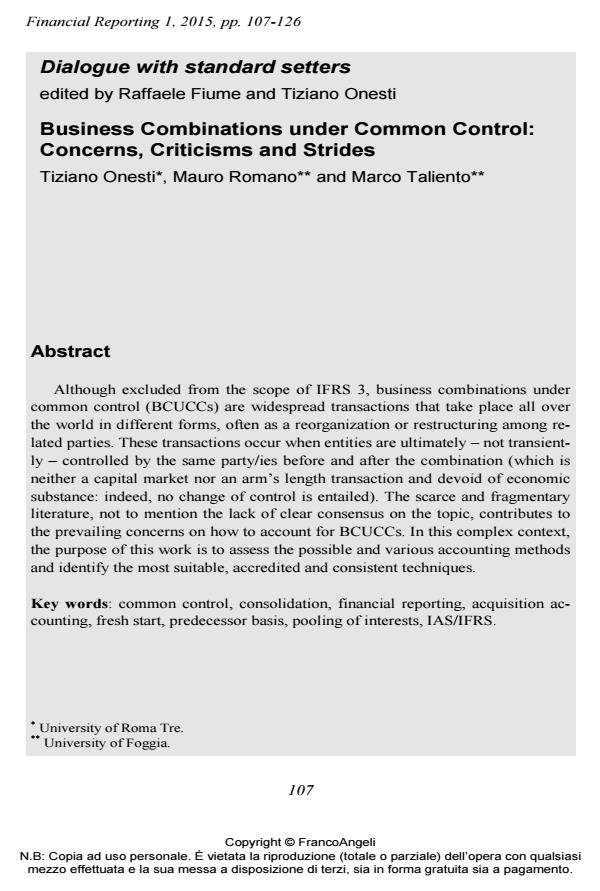Dialogue with standard setters. Business Combinations under Common Control: Concerns, Criticisms and Strides
Titolo Rivista FINANCIAL REPORTING
Autori/Curatori Raffaele Fiume, Tiziano Onesti, Mauro Romano, Marco Taliento
Anno di pubblicazione 2015 Fascicolo 2015/1
Lingua Inglese Numero pagine 20 P. 107-126 Dimensione file 233 KB
DOI 10.3280/FR2015-001005
Il DOI è il codice a barre della proprietà intellettuale: per saperne di più
clicca qui
Qui sotto puoi vedere in anteprima la prima pagina di questo articolo.
Se questo articolo ti interessa, lo puoi acquistare (e scaricare in formato pdf) seguendo le facili indicazioni per acquistare il download credit. Acquista Download Credits per scaricare questo Articolo in formato PDF

FrancoAngeli è membro della Publishers International Linking Association, Inc (PILA)associazione indipendente e non profit per facilitare (attraverso i servizi tecnologici implementati da CrossRef.org) l’accesso degli studiosi ai contenuti digitali nelle pubblicazioni professionali e scientifiche
Although excluded from the scope of IFRS 3, business combinations under common control (BCUCCs) are widespread transactions that take place all over the world in different forms, often as a reorganization or restructuring among related parties. These transactions occur when entities are ultimately - not transiently - controlled by the same party/ies before and after the combination (which is neither a capital market nor an arm’s length transaction and devoid of economic substance: indeed, no change of control is entailed). The scarce and fragmentary literature, not to mention the lack of clear consensus on the topic, contributes to the prevailing concerns on how to account for BCUCCs. In this complex context, the purpose of this work is to assess the possible and various accounting methods and identify the most suitable, accredited and consistent techniques.
Parole chiave:Common control, consolidation, financial reporting, acquisition accounting, fresh start, predecessor basis, pooling of interests, IAS/IFRS.
- What Is the Way Forward for IASB’s Research Programme under the Evidence-Supported Approach? Some Analyses and Comments Based on the 2015 Agenda Consultation Jacqueline Birt, Niclas Hellman, Ann Jorissen, Stephani Mason, Mari Paananen, in Accounting in Europe /2016 pp.269
DOI: 10.1080/17449480.2016.1208834 - The complexity in measuring M&A performance: Is a multi-dimensional approach enough? Elisa Roncagliolo, Francesco Avallone, in FINANCIAL REPORTING 1/2021 pp.89
DOI: 10.3280/FR2021-001004
Raffaele Fiume, Tiziano Onesti, Mauro Romano, Marco Taliento, Dialogue with standard setters. Business Combinations under Common Control: Concerns, Criticisms and Strides in "FINANCIAL REPORTING" 1/2015, pp 107-126, DOI: 10.3280/FR2015-001005